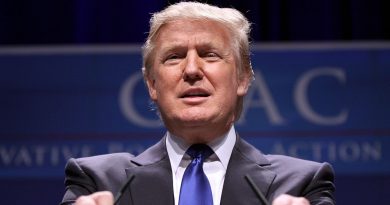Focus on Political Silencing: Mexico
By Daniel Garay
Web Editor
Of the many problems facing Mexico, drug trafficking seems to be the most recognizable to the point where it has permeated the culture. From TV shows to music, the drug trade and the cartels are a prominent subject in modern Mexican culture. Kingpins, like Joaquin “El Chapo” Guzman and other cartel leaders travel relatively unmolested, and even respected.
This is because of the incident from September 26, 2014 in the city of Iguala in the southern part of the country, where 43 students disappeared by a collusion of federal soldiers and cartel members.
However, in Michoacán where the cartels and the federal government, both are despised, rural communities build their own self-defense forces. They hunt down the cartels and watch out for corrupt federal policemen.
These problems have occurred as long as the drug war has been waged since 2006, but two incidents in 2015 brought heavy international scrutiny on how the Mexican government operates its forces.
2015 was a year where incident upon incident where the faults of the Mexican military and federal police were pointed out in the nearly decade-long drug war. A common place for these incidents is Michoacán, according to The Guardian.
To start off the year, on Jan. 6, 2015, 16 people were killed in the town of Apatzingán, Michoacán. A self-defense force, groups of armed civilians that protect the local areas, had set up camp at the city hall protesting the actions of the Mexican government. Only six people were armed with registered guns. The rest carried long sticks as part of the protest.
According to Human Rights Watch (HRW) and several local sources, witnesses reported soldiers firing on civilians, those with their hands up, those who were begging, and those who were crouched under cars for safety.
A man wounded in the incident told HRW that police planted guns next to two men that were shot while taking cover. Telesur, a Spanish-language news source, confirmed the authenticity of a video taken by a bystander showing a man bleeding to death, ultimately left to die. Later, it was shown that the police deliberately placed guns by the bodies of those killed and left to die to stage the scene for their investigation.
The federal security commissioner of Michoacán, Alfredo Castillo, is alleged to have order the men to fire on the armed group, according to Telesur. After this incident he stepped down from his post pending the conclusion of an internal investigation by the Interior Ministry.
Another incident in Michoacán took place in Tanhuanto on May, 2015. The result of this clash ended in the deaths of 43 people, including one police officer. The federal police said that there was no extrajudicial killing of the 42 “suspected criminals” because they were under fire.
As with the case in Apatzingán, irregularities in the investigation were found and allegations of crime scene alteration were reported, according to The Guardian. By October 2015, the outrage was widespread to the point where international organizations like the Inter-American Commission on Human Rights and the United Nations Human Rights Council call upon the government to investigate these incidents thoroughly.
The outrage not only spawned action by international groups, but even the U.S. government. The State Department last October recommended to Congress to withhold 15 percent of security aid to Mexico.
The government of Mexico is in trouble. Areas of the nation feel safer under the protection of the cartels, or are better off forming their own self-defense forces. They feel that the government has failed them. And, with the government’s handling of the Iguala incident, why would the people of the rural areas want the federal government’s assistance?


